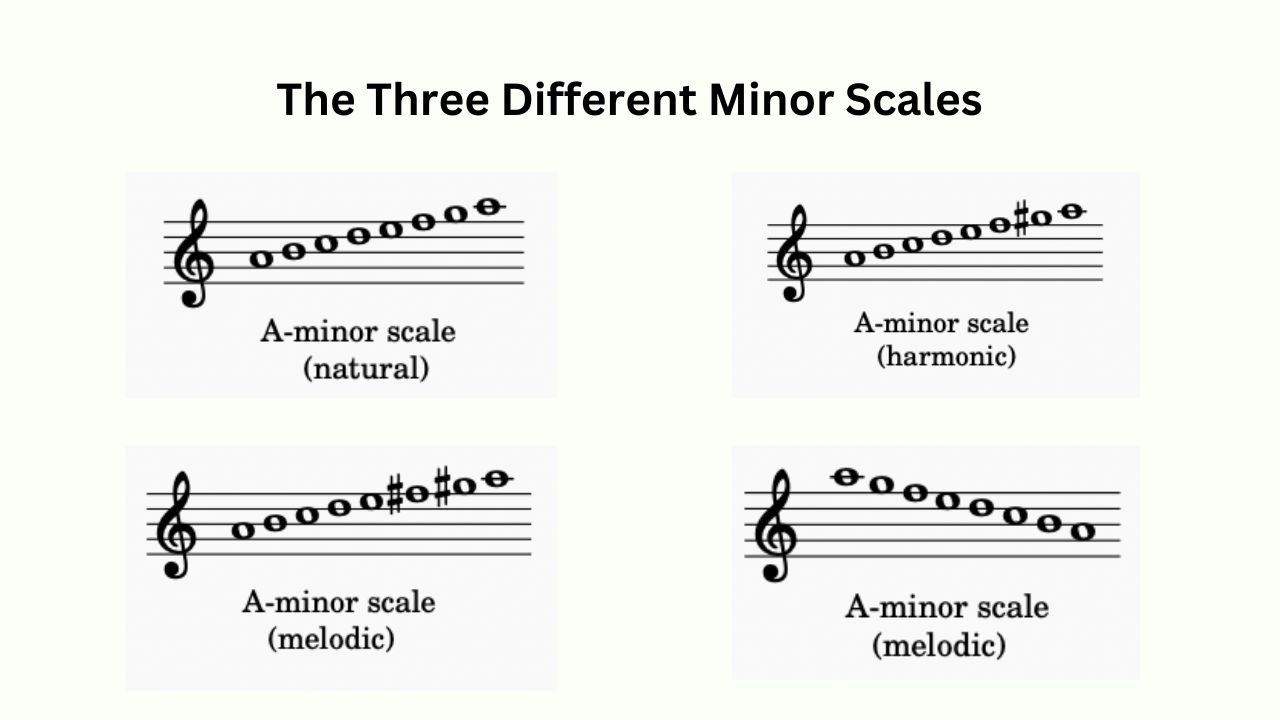
The 3 Different Minor Scales
Music Theory Lesson: The Three Different Minor Scales
Objective:
To understand the characteristics and differences between the three types of minor scales: natural minor, harmonic minor, and melodic minor.
Introduction to Minor Scales
Overview:
Minor scales are a type of diatonic scale with a darker, more somber tone compared to major scales. There are three main types of minor scales, each with its unique pattern and sound.
- Natural Minor Scale
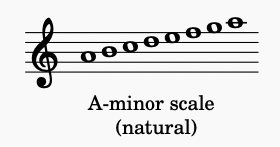
-
- Structure:
- The natural minor scale follows a specific pattern of whole and half steps: Whole, Half, Whole, Whole, Half, Whole, Whole.
- Key Signature:
- Its key signature is the same as its relative major scale, which starts on the sixth degree of the natural minor scale.
2. Harmonic Minor Scale
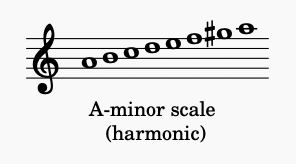
-
- Structure:
- The harmonic minor scale is the same as the natural minor scale, except for the seventh scale degree, which is raised by a half step.
- Characteristics:
- This raised seventh creates a distinctive sound, especially in the leap between the sixth and seventh degrees.
3. Melodic Minor Scale
-
- Ascending Form:
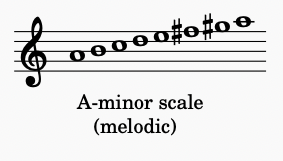
-
- When ascending, the melodic minor scale raises both the sixth and seventh degrees by a half step.
- Descending Form:
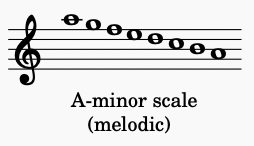
-
- When descending, it follows the same pattern as the natural minor scale.
- Usage:
- The melodic minor scale is often used in melodies for its smoother, more harmonious sound.
Significance of the Different Minor Scales
-
- Musical Expression:
- Each minor scale offers different emotional qualities and sound textures.
- Harmony and Melody:
- Understanding these scales is crucial for creating harmonies and melodies in minor keys.
- Flexibility in Composition:
- Composers often interchange these scales for variety and expressiveness in their music.
Exercises
-
- Scale Practice:
- Play and listen to the differences between the natural, harmonic, and melodic minor scales on your instrument.
- Ear Training:
- Develop the ability to recognize each type of minor scale by ear.
- Composition:
- Experiment with using different minor scales in composing melodies and harmonies.
Conclusion
The three types of minor scales – natural, harmonic, and melodic – each offer unique qualities and are essential for musicians to understand. Mastery of these scales enriches a musician’s expressive palette and provides greater flexibility in musical composition and performance.